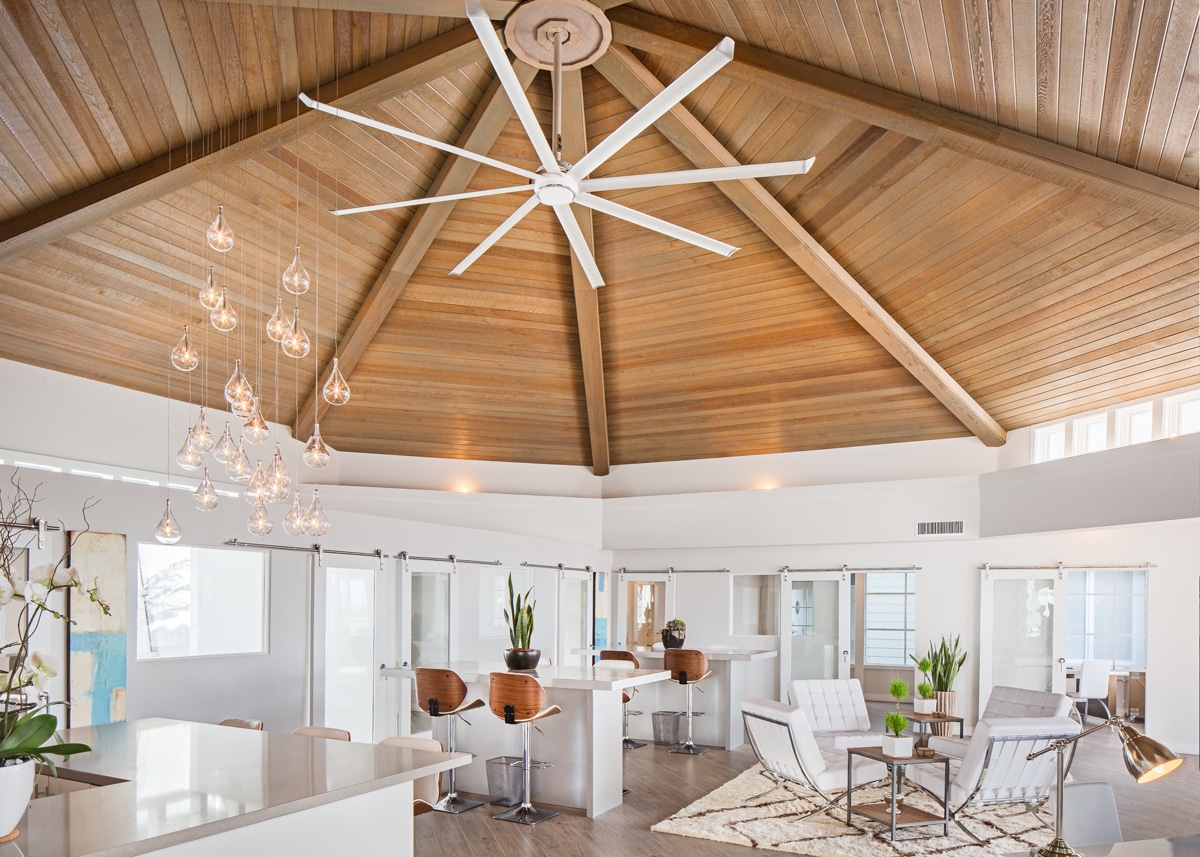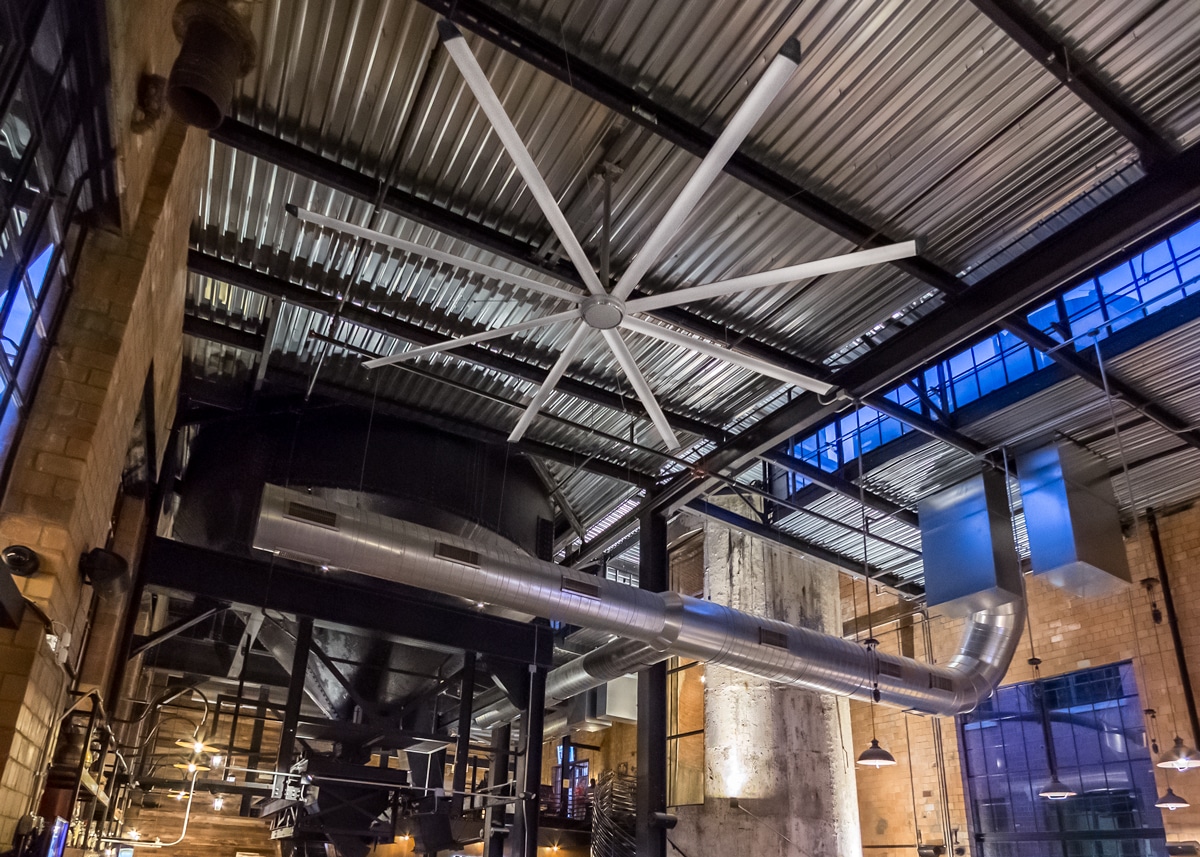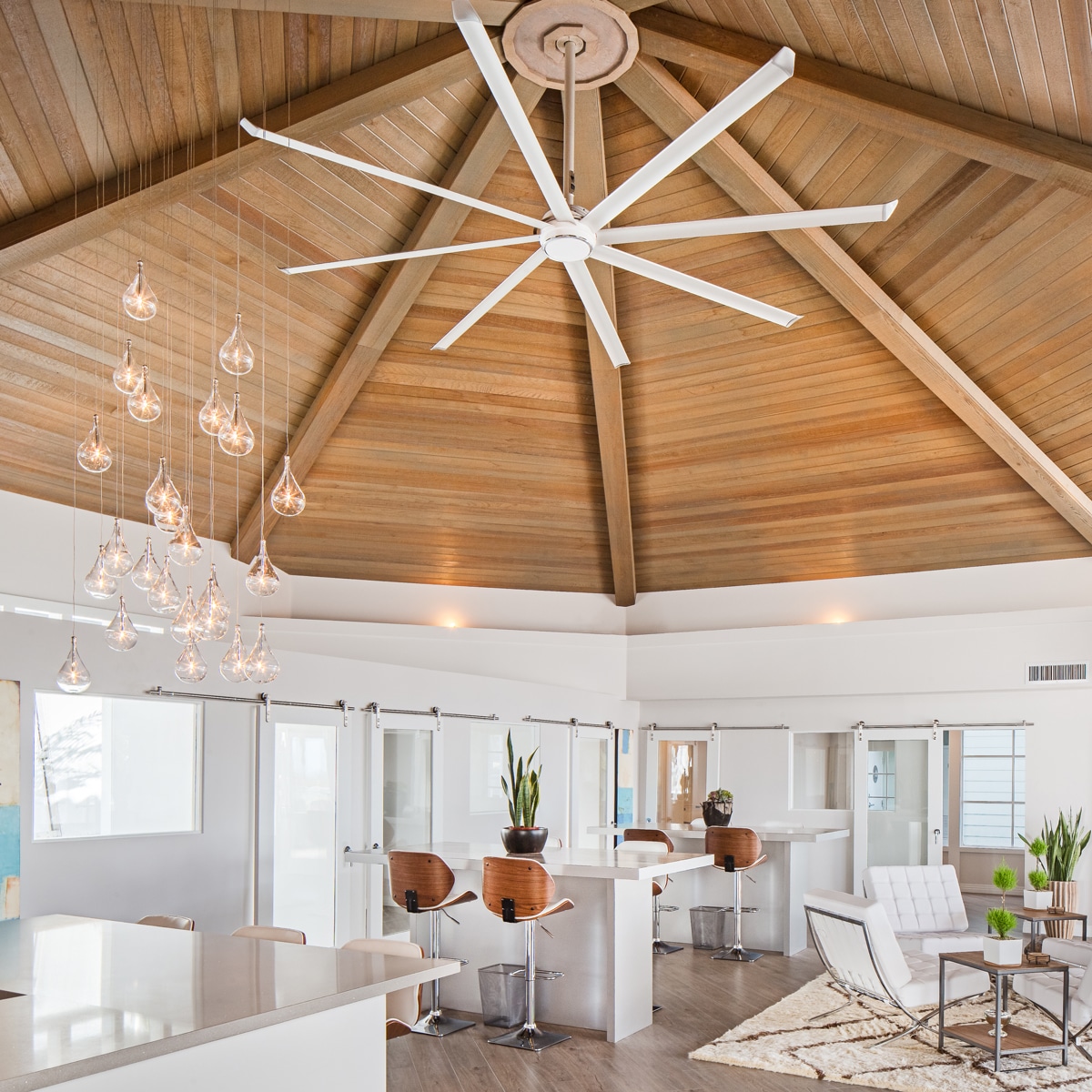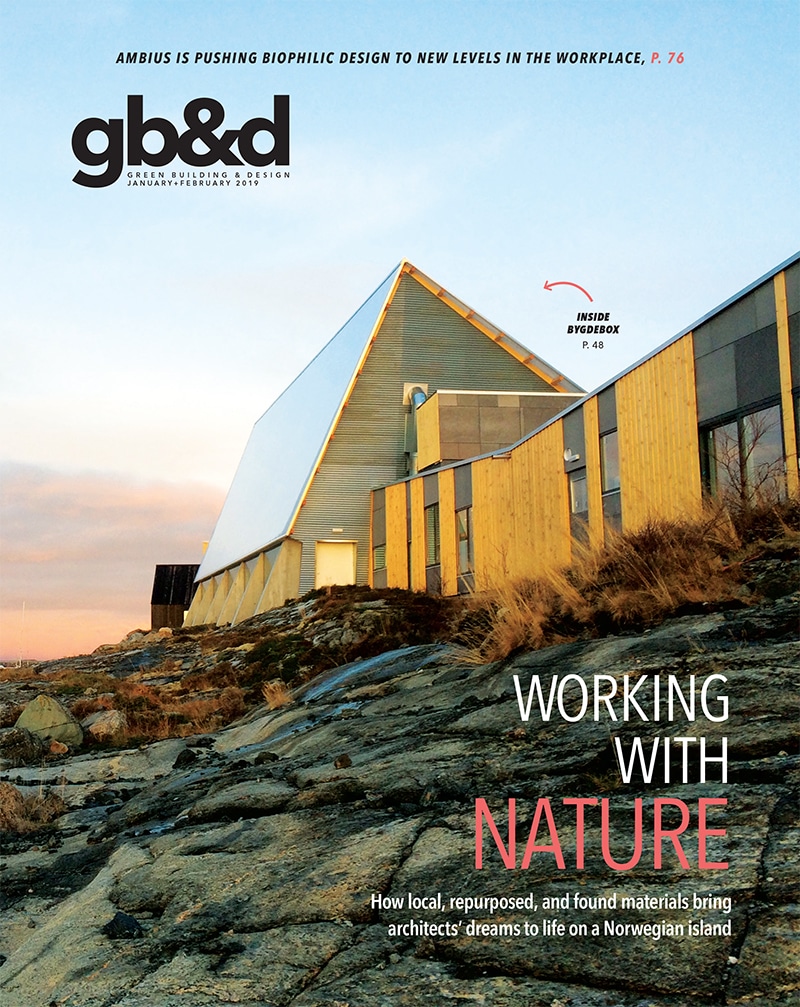How to design and engineer the perfect fan for every space with HVLS technology.

[Photo: Courtesy of Big Ass Fans]
Most people approach building design using ceiling fans and air conditioning with a “belt and suspenders” mindset, according to Christian Taber of Big Ass Fans. It’s not that air conditioning and ceiling fans don’t work together to achieve occupant comfort, but often full A/C systems are put in place and ceiling fans are added after the fact. Instead, to achieve the same ideal conditions in the space, you should incorporate ceiling fans during design, allowing for a reduced capacity A/C system to be put in place.
It’s a concept that’s taking hold, suggests Taber, principal engineer of codes and standards for Big Ass Fans, thanks to research that informs ASHRAE standards and LEED rating systems. Part of the confusion stems from understanding what ceiling fans really do. What high-volume, low-speed (HVLS) ceiling fans accomplish is occupant comfort—not changing a room’s temperature. Big Ass Fans’ large, rotating blades—measuring as much as 24 feet (7.3 meters) in diameter, tip to tip—move air more efficiently to the occupant level where a cooling effect can be provided.
FROM OUR JAN+FEB 2019 ISSUE
The preferred publication of leading green professionals.

Big Ass Fans’ applications can offer up to 10 degrees of cooling in the summer and cut energy costs up to 30% in the winter. [Photo: Courtesy of Big Ass Fans]
1. Ceiling fans are often misapplied.
Many building managers install ceiling fans as an afterthought. Taber says this and other criteria people use frequently miss the mark. “Some select it for style and not performance,” he says. “Or they look at size and speed but forget to factor in the impact that floor level obstructions or mounting height have on fan performance.” The speed of airflow just above the floor, where people are, matters most. Other factors to consider are the ambient temperature and humidity in the room as well as the activity levels of the people in it (e.g., warehouse workers’ bodies generate more heat than people sitting at computers).
Researchers at the Center for the Built Environment at UC California Berkeley developed an online calculator for predicted occupant thermal comfort according to ASHRAE Standard 55 criteria called the CBE Thermal Comfort Tool. The tool identifies condition ranges where comfort is achieved by adjusting for any of the following factors: air temperature, mean radiant temperature, air speed, humidity, occupant metabolic rate (or physical activities of occupants), and clothing of occupants.
Critical to note: Every space is different, so experts should be consulted when designing a comfort system to ensure acceptable levels of occupant comfort are achieved.
2. ASHRAE and LEED
A boost to rational ceiling fan placement is how occupant comfort levels—versus simple fan CFM output—are now recognized by ASHRAE and the USGBC’s LEED rating system.
ASHRAE 216, which was drafted and published for public comment in 2018, looks at air velocity profiles, the movement (feet per minute) of air at the floor (occupant) level for use in thermal comfort calculations. The USGBC focuses on reducing energy consumption and encourages the use of renewable energy. “The standardized measurement of elevated air speed created by a ceiling fan is new for building engineers,” Taber says. “The creation of Standard 216 provides a lot of legitimacy to the research being done at Big Ass Fans because it provides a means of demonstrating comfort and energy conservation.”

[Photo: Courtesy of Big Ass Fans]
3. Cut energy consumption in all climates.
HVLS fans allow building thermostats to be set at higher temperatures in the summer and make it easier to maintain the desired temperature in the winter by forcing warm air down from the ceiling to occupants. Big Ass Fans, in certain applications, can offer up to 10 degrees (Fahrenheit) of cooling in the summer and cut energy costs up to 30% in the winter.
In net-zero and other hyper-efficient buildings, well-designed fan systems might eliminate the need altogether for a compressurized (traditional) cooling system. One example is the La Escuelita Education Center in Oakland, California. In the area’s mild climate, the school relies on building mass, natural ventilation, night flush cooling, and HVLS fans from Big Ass Fans to achieve the net-zero goal; it’s just one example of how collaboration with the project team results in an efficient system.
In a very different climate, Machetanz Elementary in Wasilla, Alaska has 12-foot-diameter fans to redistribute heat from ceiling to occupant. The fans outperformed expectations and help save the school district $200,000 annually.
4. HVLS fans are sleek and smart.
It’s not just the large diameter Big Ass Fans that make a statement and provide the cooling effect needed to feel comfortable in commercial spaces. The smaller Haiku by Big Ass Fans uses SenseME technology to monitor room temperature and humidity, automatically responding to conditions that change during the day. Solar-generated heat pouring through windows can cause an increase in fan speed, while cooler air from an open window at night triggers a fan speed reduction.
Haiku’s silent operation doesn’t disrupt the environment and add unwanted noise. The evenly distributed breeze keeps customers and patrons comfortable while the energy efficiency and design keeps money in owners’ pockets. Approximately every degree of occupant cooling saves 3 to 6% in energy costs, according to the Department of Energy.
Of course, most people don’t think twice about any of this. But look up at the Big Ass Fan rotating overhead and you can’t deny—the sleek design keeping you comfortable makes a statement. This is a space where someone took the time to think through both science and style


